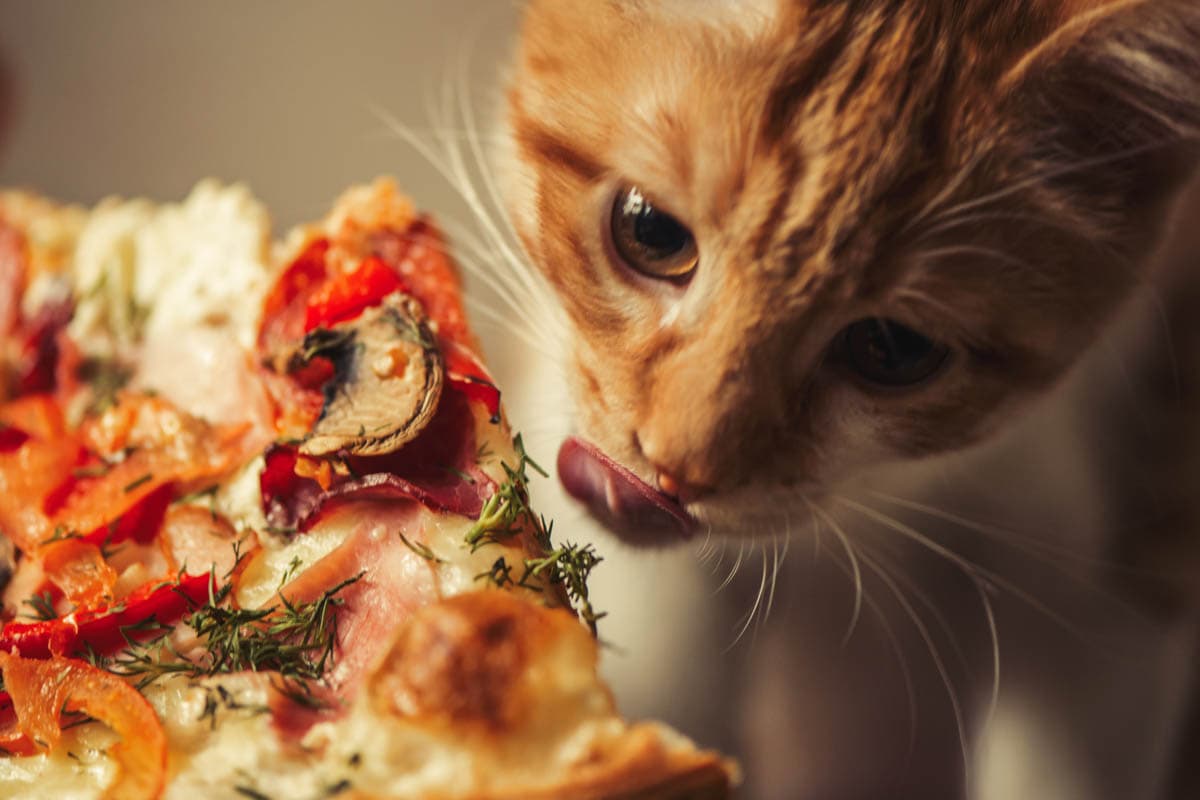Can cats eat table scraps?
The short answer is ‘they probably shouldn’t’ because most human foods aren’t nutritionally balanced, table scraps can add excess calories to the diet and some human foods are toxic to cats.
The long answer is ‘maybe, on occasion‘, but read below before you make any decisions.
A cat’s nutritional requirements
Cats are obligate carnivores, with unique dietary needs. Feeding a cat too many table scraps can lead to nutritional deficiencies which can be life-threatening. Many human foods also contain ingredients that are poisonous to cats such as garlic and onion.
Why table scraps are not suitable for cats
Cats quickly become accustomed to being given treats or scraps, which can lead to inappropriate behaviour such as begging and stealing food. Not only is this irritating (who wants to have their eye fillet steak snaffled by the cat?), but can be dangerous if the cat develops a habit of jumping up on the stovetop (we had a cat who used to do this), to steal food as it is cooking.
They’re not nutritionally balanced:
Cats used to eating human foods can also become picky eaters, choosing to eat our food over their own. Again, this can quickly lead to nutritional deficiencies in your cat. Never, ever give your cat canned tuna more than very sparingly, this can lead to a painful condition called yellow fat disease, which is the result of consuming too much-unsaturated fat and deficient in Vitamin E.
Empty calories:
Obesity is at epidemic proportions in cats, and feeding table-scraps in addition to the cat’s regular diet adds unnecessary calories. A fat cat isn’t a cute cat; it is a ticking time bomb.
Food poisoning:
Cats are not waste disposal units, just because you have a chicken breast that has been sitting in the fridge for a week doesn’t mean that it’s okay to give it to the cat. Cats can get food poisoning too. A rule of thumb I always follow is if it’s too old for me to eat, it’s too old for the cat to eat.
Not to be a complete spoilsport, the very, very occasional treat is fine, as long as it is infrequent and safe to feed. If you must give your cat table scraps, make sure that it is only very occasional and don’t feed a cat when you are sitting at the table. Place the food in your cat’s bowl to prevent bad habits from developing.
Just be aware that many foods that are completely safe for humans to eat can be toxic to cats, even in small doses. So feeding that delicious beef stew may seem innocent enough, if it contains onion or garlic, it could potentially poison your cat. There is a more thorough list of foods cats can’t eat here.
Foods not to give to a cat
- Cooked bones
- Food containing onion, garlic or tomato
- Chocolate
- Alcohol
- Fatty food
- Baby food (contains onion powder and garlic)
Some people will recommend small amounts of human food to encourage a cat who has lost his appetite due to sickness or stress. This may include cooked chicken breast pieces or a small amount of canned tuna. Keep it to a minimum, and only until your cat’s appetite has returned.
Treats and table scraps should make up no more than 10% of a cat’s diet and should be an occasional treat only.
Cats on special diets
Always speak with your veterinarian before offering any other type of food to a cat who is on a prescription diet as additional types of food may have an impact on the effectiveness of the diet.
Cats who are on food trials should have no other food (including table scraps) as this will invalidate the trial.

